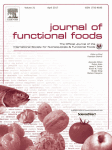Neuroborean
Bluelight Crew
- Joined
- Nov 15, 2020
- Messages
- 1,433
It seems that it has been used in Tibetan medicine (amazing source of not-well-known phytochemicals and psychoactives=).
I'm just starting to read about it so I don't know so much about it, I copy-paste from its wiki page:
"Nicandra physalodes contains nicandrenones, a group of the steroidal lactones known as withanolides. The nicandrenones, like certain other types of withanolide, have insecticidal properties. 30 years after their discovery, the first total synthesis of nicandrenones was carried out in the year 2000.[21] Amongst its other paradoxical attributes, N. physalodes is also slightly intoxicating,[22] showing a certain degree of psychoactivity of a type similar to that elicited by the tropane alkaloid hyoscyamine (well known as one of the active principles present in the notoriously toxic nightshades Hyoscyamus niger and Atropa belladonna and causing mydriasis - a symptom said also to be caused by the alkaloids present in Nicandra). This property of the plant is reflected in one of the common names given it in France (namely belladonne de pays i.e. 'country belladonna') and likewise in the common name belladona given it in Bolivia.[23] It is not yet known whether this mild psychoactivity is referable to the alkaloid content or the withanolide content (or possibly to both - or indeed a synergy between the two). Like its more toxic relatives, Nicandra physalodes is alkaloidal, analyses having revealed the presence of the tropane alkaloid tropinone and the pyrrolidine alkaloid hygrine (0.1%, in the root). Withanolides are found almost exclusively in plants of the Solanaceae and, while it is noticeable that many psychoactive species belonging to that family contain only, or primarily, such compounds, not a single withanolide has yet been proven to be psychoactive. The compounds are named for the Solanaceous genus Withania, the best-known species of which, Withania somnifera, is, as its specific name suggests, mildly psychoactive to the extent of being sleep-inducing (among other useful medicinal properties). The use of W.somnifera (common name (i.a.) 'Indian ginseng') as a tonic (adaptogen) in Ayurvedic medicine[24] parallels the use of Nicandra as an adaptogen in traditional Tibetan medicine (see above, under 'Uses') and is accounted for by withanolide content.[25][26] Also present in Nicandra are calystegines, a new group of polyhydroxy alkaloids with a nortropane skeleton and named for the bindweed genus Calystegia (Convolvulaceae). Their occurrence has been noted in several species of the Solanaceae, including Atropa belladonna. The biosynthesis of these compounds is thought to take place via the tropane alkaloid pathway, the first metabolite being pseudotropine.[27]"
It seems pretty interesting to be honest...
"This plant is also known by name shoo fly plant because it has potent insects repellant property due to the presence of nicandrenone as a main active chemical constituent. Various alkaloids like withanolide, withaperuvin E and nicandrin B are isolated from this plant which is responsible for various pharmacological activities. The literature survey of the plant possessed various pharmacological activities like antidiabetic, diuretic, antimicrobial etc. It also shows in-vitro cytotoxic activity. Traditionally it is used as Analgesic, anthelmintic, antibacterial, anti-inflammatory and febrifuge and its regular use also increases bodily vigour. It is also used in the treatment of contagious disorders, toothache, and intestinal pain from worms and in impotence. On the basis of their traditional use and scientific investigation, this plant is considered to be very important according to medicinal point of view"
Reading the abstract would be enough for me to try to find it..
About the chemicals... I would need much more time to do a proper "study" of them since there's not so many sources it seems:
"CHEMICAL CONSTITUENTS:
The alkaloids like withanolide, withaperuvin E and nicandrin B are isolated from the plant and characterized by means of chemical and spectroscopy [11].A compound called 6- Hydroxykynurenic Acid (6-HKA) is also present in Nicandra and most of the species of solanaceae family. The presence of 6-HKA is taken as evidence in plants for the tryptophan-catabolic pathway already known in mammals and micro-organisms [12]. Nic-1- lactone, a minor steroidal constituent was also obtained from nicandra plant. 3-O-β-D-
glucopyranosyl-1α, 2β, 3α, 6α-tetrahydroxy- nor-tropane are recently isolated compounds from Nicandra physalodes fruits (Solanaceae.) [13]. Nicandrenone is obtained from the
leaves of plant Nicandra physalodes. The substance nicandrenone is insect’s repellents with toxic properties. It is a conjugated ketone with molecular formula C33H44O7.This substance was showing insects repellent properties against housefly as well as hornworms. This repellent substance nicandrenone is obtained from the leaves by means of extraction [14].Nicandra physalodes contains two new methyl steroids (2) and (3) the constitution of the former is demonstrated by crystallographic analysis of its acetate, using direct methods. [15] The roots of nicandra physalodes contain 0.1% hygrine [16]."
More info: https://laidbackgardener.blog/2018/...-the-most-beautiful-annual-you-never-planted/
Here you can see where it has been introduced and from where it's native:
 powo.science.kew.org
powo.science.kew.org
Some papers about the chemicals:

 www.semanticscholar.org
www.semanticscholar.org
About some actives and their potential neuroprotective effects...

 www.sciencedirect.com
www.sciencedirect.com
This plant is odd as fuck, it seems toxic to animals, but only in high quantities and it has been used as medicine and food (in China). I cannot find actual human toxicology reports so I guess it's not as toxic as the other solanaceae deliriants and its pharmacological activity seems to be aimed to be an adaptogen similar to ashwagandha more than anything else, however because of its complexity it would be interesting to get it and use it, in increased doses, as its potential toxicity is tested. Only in animals there's some unconclusive toxicity reports (goats/calves), and the LD50 in mice seems to be quite high (or moderate, depending on how you want to see it).
Here it's stated that it has "low severity" poisonous characteristics. https://plants.ces.ncsu.edu/plants/nicandra-physalodes/#poison
Other common names of the plant are: peru apple, shoo fly and uchuva del duende (in South America). Uchuva is the edible physallis fruit/plant and duende means elf/goblin.
Perhaps this plant is useless.... who knows, for me it seem interesting enough to find some seeds and grow it on my own, don't you think? what do you think @G_Chem ?
I'm just starting to read about it so I don't know so much about it, I copy-paste from its wiki page:
"Nicandra physalodes contains nicandrenones, a group of the steroidal lactones known as withanolides. The nicandrenones, like certain other types of withanolide, have insecticidal properties. 30 years after their discovery, the first total synthesis of nicandrenones was carried out in the year 2000.[21] Amongst its other paradoxical attributes, N. physalodes is also slightly intoxicating,[22] showing a certain degree of psychoactivity of a type similar to that elicited by the tropane alkaloid hyoscyamine (well known as one of the active principles present in the notoriously toxic nightshades Hyoscyamus niger and Atropa belladonna and causing mydriasis - a symptom said also to be caused by the alkaloids present in Nicandra). This property of the plant is reflected in one of the common names given it in France (namely belladonne de pays i.e. 'country belladonna') and likewise in the common name belladona given it in Bolivia.[23] It is not yet known whether this mild psychoactivity is referable to the alkaloid content or the withanolide content (or possibly to both - or indeed a synergy between the two). Like its more toxic relatives, Nicandra physalodes is alkaloidal, analyses having revealed the presence of the tropane alkaloid tropinone and the pyrrolidine alkaloid hygrine (0.1%, in the root). Withanolides are found almost exclusively in plants of the Solanaceae and, while it is noticeable that many psychoactive species belonging to that family contain only, or primarily, such compounds, not a single withanolide has yet been proven to be psychoactive. The compounds are named for the Solanaceous genus Withania, the best-known species of which, Withania somnifera, is, as its specific name suggests, mildly psychoactive to the extent of being sleep-inducing (among other useful medicinal properties). The use of W.somnifera (common name (i.a.) 'Indian ginseng') as a tonic (adaptogen) in Ayurvedic medicine[24] parallels the use of Nicandra as an adaptogen in traditional Tibetan medicine (see above, under 'Uses') and is accounted for by withanolide content.[25][26] Also present in Nicandra are calystegines, a new group of polyhydroxy alkaloids with a nortropane skeleton and named for the bindweed genus Calystegia (Convolvulaceae). Their occurrence has been noted in several species of the Solanaceae, including Atropa belladonna. The biosynthesis of these compounds is thought to take place via the tropane alkaloid pathway, the first metabolite being pseudotropine.[27]"
It seems pretty interesting to be honest...
"This plant is also known by name shoo fly plant because it has potent insects repellant property due to the presence of nicandrenone as a main active chemical constituent. Various alkaloids like withanolide, withaperuvin E and nicandrin B are isolated from this plant which is responsible for various pharmacological activities. The literature survey of the plant possessed various pharmacological activities like antidiabetic, diuretic, antimicrobial etc. It also shows in-vitro cytotoxic activity. Traditionally it is used as Analgesic, anthelmintic, antibacterial, anti-inflammatory and febrifuge and its regular use also increases bodily vigour. It is also used in the treatment of contagious disorders, toothache, and intestinal pain from worms and in impotence. On the basis of their traditional use and scientific investigation, this plant is considered to be very important according to medicinal point of view"
Reading the abstract would be enough for me to try to find it..
About the chemicals... I would need much more time to do a proper "study" of them since there's not so many sources it seems:
"CHEMICAL CONSTITUENTS:
The alkaloids like withanolide, withaperuvin E and nicandrin B are isolated from the plant and characterized by means of chemical and spectroscopy [11].A compound called 6- Hydroxykynurenic Acid (6-HKA) is also present in Nicandra and most of the species of solanaceae family. The presence of 6-HKA is taken as evidence in plants for the tryptophan-catabolic pathway already known in mammals and micro-organisms [12]. Nic-1- lactone, a minor steroidal constituent was also obtained from nicandra plant. 3-O-β-D-
glucopyranosyl-1α, 2β, 3α, 6α-tetrahydroxy- nor-tropane are recently isolated compounds from Nicandra physalodes fruits (Solanaceae.) [13]. Nicandrenone is obtained from the
leaves of plant Nicandra physalodes. The substance nicandrenone is insect’s repellents with toxic properties. It is a conjugated ketone with molecular formula C33H44O7.This substance was showing insects repellent properties against housefly as well as hornworms. This repellent substance nicandrenone is obtained from the leaves by means of extraction [14].Nicandra physalodes contains two new methyl steroids (2) and (3) the constitution of the former is demonstrated by crystallographic analysis of its acetate, using direct methods. [15] The roots of nicandra physalodes contain 0.1% hygrine [16]."
More info: https://laidbackgardener.blog/2018/...-the-most-beautiful-annual-you-never-planted/
Here you can see where it has been introduced and from where it's native:
Nicandra physalodes (L.) Gaertn. | Plants of the World Online | Kew Science
The native range of this species is Peru to NW. Argentina. It is an annual and grows primarily in the seasonally dry tropical biome. It is used to treat unspecified medicinal disorders, has environmental uses, as a poison and a medicine and for food.
Some papers about the chemicals:

Withanolides from aerial parts of Nicandra physalodes. | Semantic Scholar
Semantic Scholar extracted view of "Withanolides from aerial parts of Nicandra physalodes." by Mu-Yuan Yu et al.
About some actives and their potential neuroprotective effects...

Phenolic amides with anti-Parkinson’s disease (PD) effects from Nicandra physaloides
Nicandra physaloides is a traditional folk medicine in China, and its seeds are used to make jelly. Phytochemical investigation of the active ethyl ac…
This plant is odd as fuck, it seems toxic to animals, but only in high quantities and it has been used as medicine and food (in China). I cannot find actual human toxicology reports so I guess it's not as toxic as the other solanaceae deliriants and its pharmacological activity seems to be aimed to be an adaptogen similar to ashwagandha more than anything else, however because of its complexity it would be interesting to get it and use it, in increased doses, as its potential toxicity is tested. Only in animals there's some unconclusive toxicity reports (goats/calves), and the LD50 in mice seems to be quite high (or moderate, depending on how you want to see it).
Here it's stated that it has "low severity" poisonous characteristics. https://plants.ces.ncsu.edu/plants/nicandra-physalodes/#poison
Other common names of the plant are: peru apple, shoo fly and uchuva del duende (in South America). Uchuva is the edible physallis fruit/plant and duende means elf/goblin.
Perhaps this plant is useless.... who knows, for me it seem interesting enough to find some seeds and grow it on my own, don't you think? what do you think @G_Chem ?

